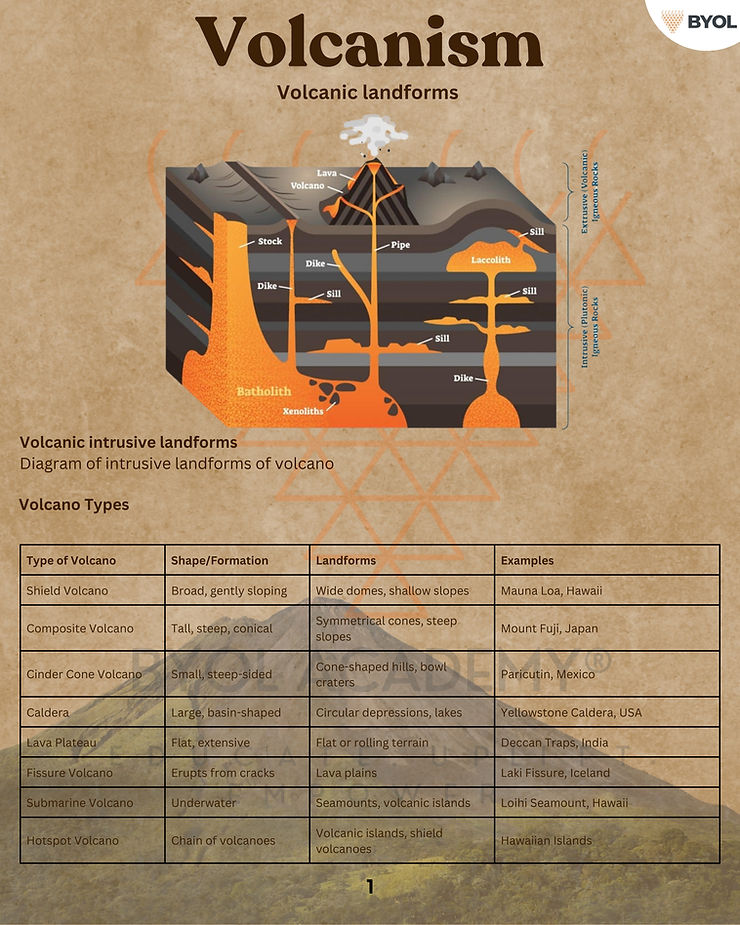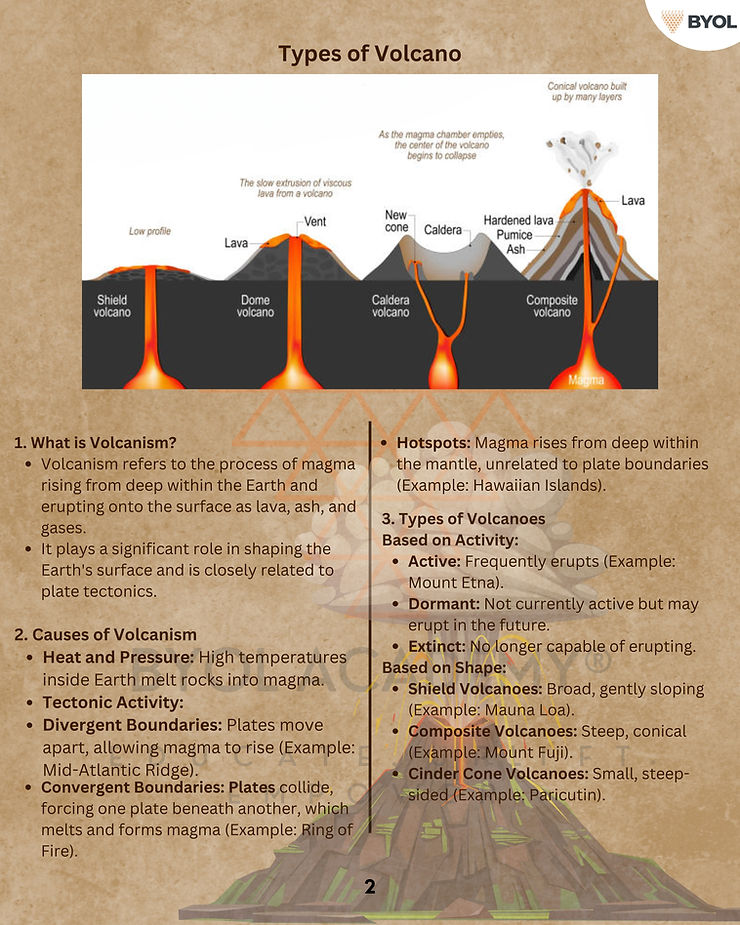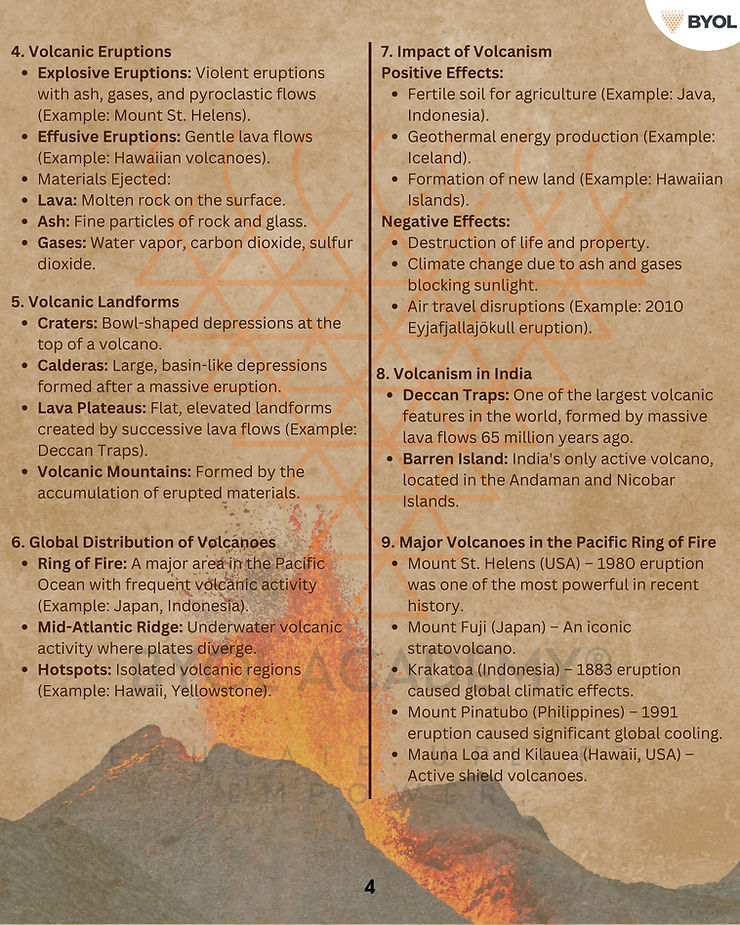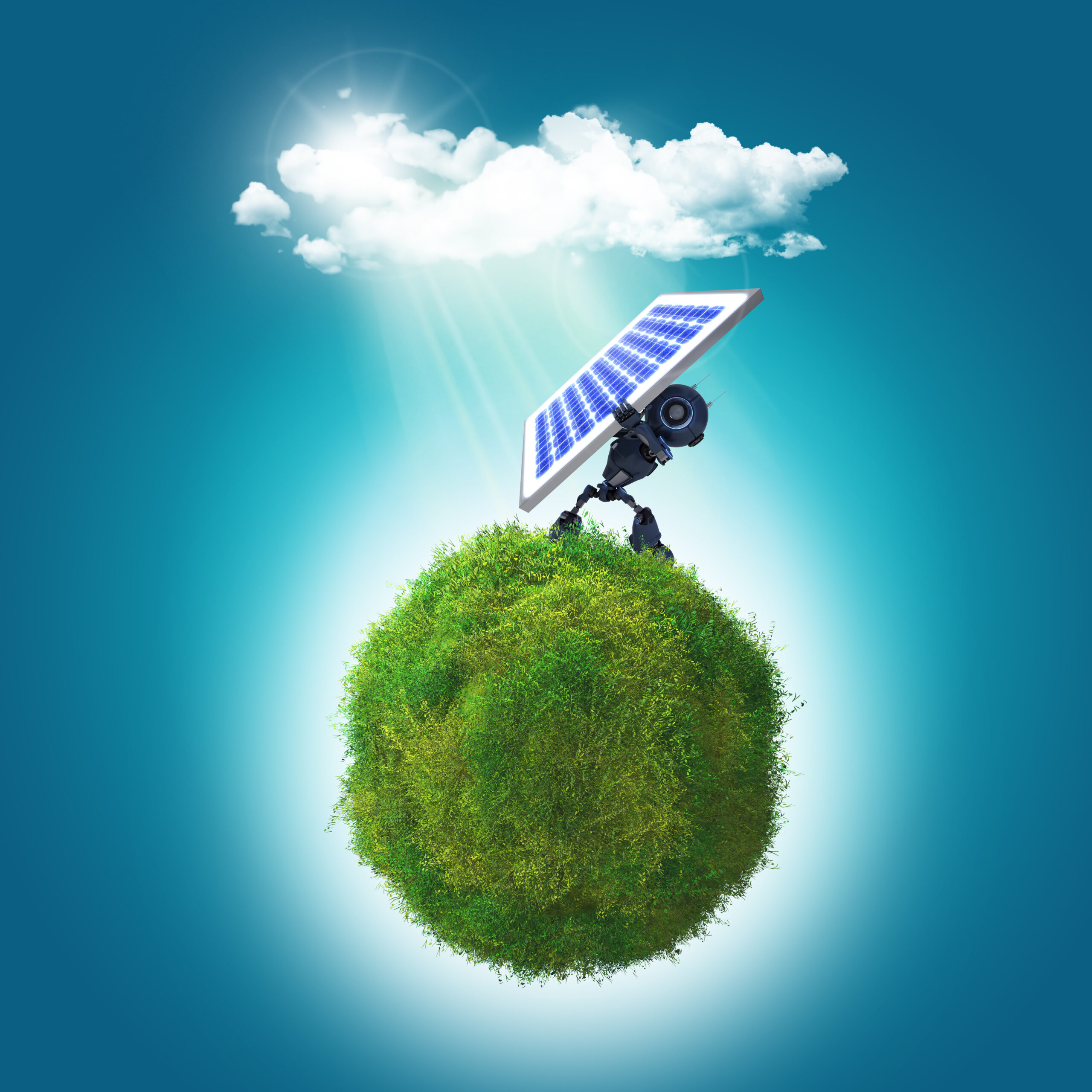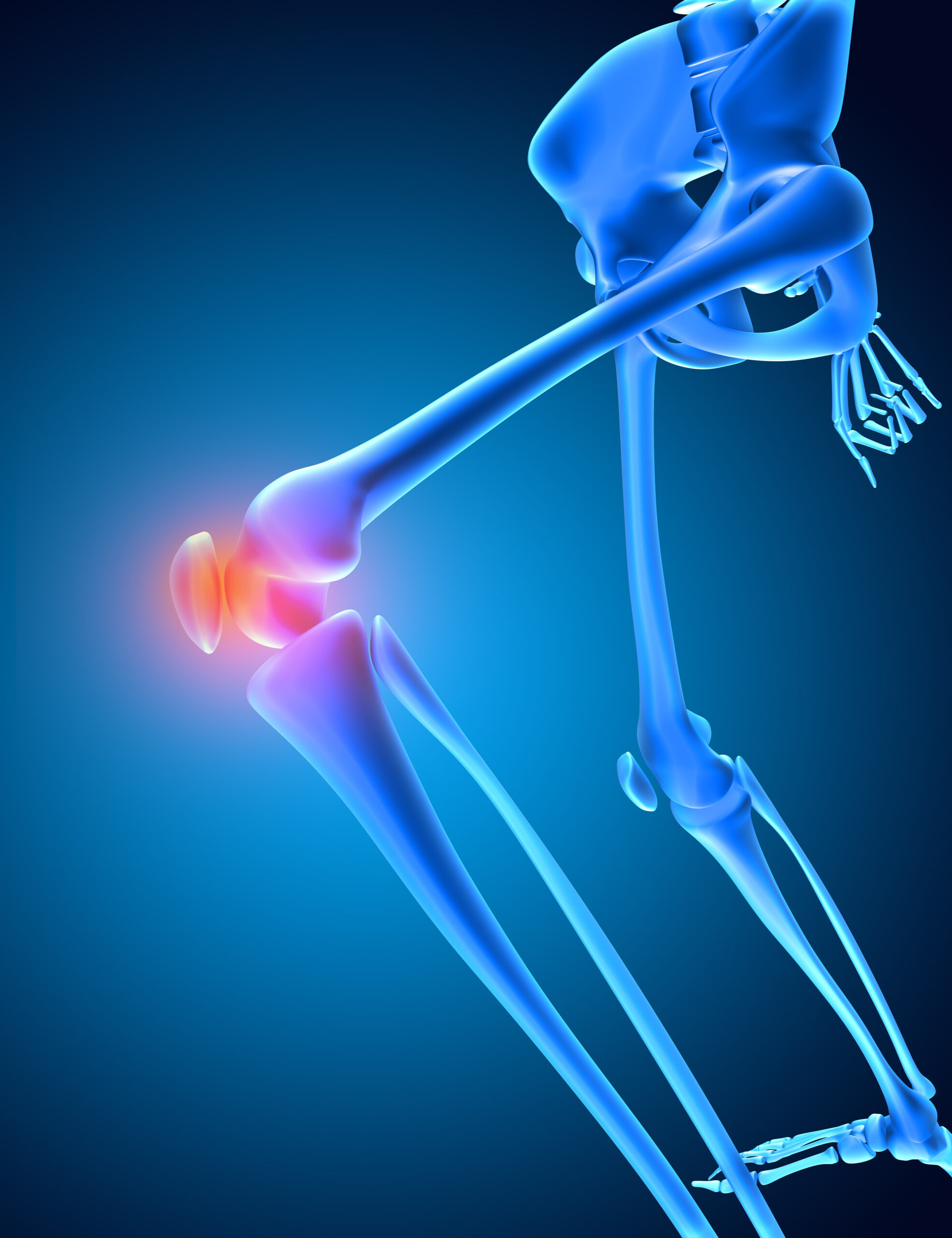What is Volcanism?
- Volcanism refers to the process of magma (molten rock) rising from deep within the Earth and erupting onto the surface as lava, ash, and gases.
- It is a natural phenomenon that shapes the Earth’s surface and is closely related to plate tectonics.
Causes of Volcanism
- Heat and Pressure Inside Earth: The Earth’s interior is extremely hot, and this heat causes rocks to melt, forming magma.
- Plate Tectonics: Most volcanoes occur at tectonic plate boundaries:
- Divergent Boundaries: Plates move apart, allowing magma to rise (e.g., Mid-Atlantic Ridge).
- Convergent Boundaries: Plates collide, and one plate is forced beneath another, melting to form magma (e.g., Ring of Fire).
- Hotspots: Areas where magma rises from deep within the mantle, unrelated to plate boundaries (e.g., Hawaiian Islands).
Types of Volcanoes
- Based on Activity:
- Active: Erupting or likely to erupt (e.g., Mount Etna, Italy).
- Dormant: Not currently active but may erupt in the future.
- Extinct: No longer capable of erupting.
- Based on Shape:
- Shield Volcanoes: Broad, gently sloping (e.g., Mauna Loa, Hawaii).
- Composite Volcanoes: Steep, conical (e.g., Mount Fuji, Japan).
- Cinder Cone Volcanoes: Small, steep-sided (e.g., Paricutin, Mexico).
Volcanic Eruptions
- Explosive Eruptions: Violent eruptions with ash, gases, and pyroclastic flows (e.g., Mount St. Helens).
- Effusive Eruptions: Gentle lava flows (e.g., Hawaiian volcanoes).
- Materials Ejected:
- Lava: Molten rock on the surface.
- Ash: Fine particles of rock and glass.
- Gases: Water vapor, carbon dioxide, sulfur dioxide.
Volcanic Landforms
- Craters: Bowl-shaped depressions at the top of a volcano.
- Calderas: Large, basin-like depressions formed after a massive eruption.
- Lava Plateaus: Flat, elevated landforms created by successive lava flows (e.g., Deccan Traps, India).
- Volcanic Mountains: Formed by the accumulation of erupted materials.
Global Distribution of Volcanoes
- Ring of Fire: A major area in the Pacific Ocean with frequent volcanic activity (e.g., Japan, Indonesia, Philippines).
- Mid-Atlantic Ridge: Underwater volcanic activity where plates diverge.
- Hotspots: Isolated volcanic regions (e.g., Hawaii, Yellowstone).
Impact of Volcanism
- Positive Effects:
- Fertile soil for agriculture (e.g., Java, Indonesia).
- Geothermal energy production (e.g., Iceland).
- Formation of new land (e.g., Hawaiian Islands).
- Negative Effects:
- Destruction of life and property.
- Climate change due to ash and gases blocking sunlight.
- Air travel disruptions (e.g., 2010 Eyjafjallajökull eruption in Iceland).
Volcanism in India
- Deccan Traps: One of the largest volcanic features in the world, formed by massive lava flows 65 million years ago.
- Barren Island: India’s only active volcano, located in the Andaman and Nicobar Islands.
Details about Types of Volcano
1. Shield Volcanoes
- Description:
- Broad, gently sloping volcanoes formed by the eruption of low-viscosity (runny) basaltic lava.
- The lava flows easily and spreads over large areas, creating a shield-like shape.
- Landforms:
- Wide, flat domes with shallow slopes.
- Often have a central crater or multiple vents.
- Examples:
- Mauna Loa, Hawaii: The largest active shield volcano on Earth.
- Kilauea, Hawaii: Known for its frequent and gentle eruptions.
2. Composite Volcanoes (Stratovolcanoes)
- Description:
- Tall, steep, conical volcanoes formed by alternating layers of lava, ash, and volcanic debris.
- Eruptions are explosive due to high-viscosity (thick) magma, which traps gases.
- Landforms:
- Symmetrical cones with steep slopes.
- Often have a crater at the summit and secondary vents on the sides.
- Examples:
- Mount Fuji, Japan: A classic example of a composite volcano.
- Mount St. Helens, USA: Known for its catastrophic 1980 eruption.
3. Cinder Cone Volcanoes
- Description:
- Small, steep-sided volcanoes formed by the accumulation of volcanic cinders (small fragments of lava) ejected during explosive eruptions.
- Usually short-lived and form quickly.
- Landforms:
- Cone-shaped hills with a bowl-shaped crater at the top.
- Often found on the flanks of larger volcanoes.
- Examples:
- Paricutin, Mexico: A famous cinder cone that suddenly formed in a farmer’s field in 1943.
- Sunset Crater, USA: Located in Arizona, it is a well-preserved cinder cone.
4. Calderas
- Description:
- Large, basin-shaped depressions formed when a volcano collapses into its magma chamber after a massive eruption.
- Often associated with explosive eruptions that empty the magma chamber.
- Landforms:
- Circular or oval-shaped depressions, sometimes filled with water to form lakes.
- Can be several kilometers wide.
- Examples:
- Yellowstone Caldera, USA: A supervolcano with a massive caldera.
- Crater Lake, USA: Formed by the collapse of Mount Mazama.
5. Lava Plateaus
- Description:
- Extensive, flat landforms created by successive eruptions of highly fluid lava that spreads over large areas.
- The lava cools and solidifies to form thick, horizontal layers.
- Landforms:
- Flat or gently rolling terrain.
- Often dissected by rivers and erosion over time.
- Examples:
- Deccan Traps, India: One of the largest volcanic features in the world, formed by massive lava flows 65 million years ago.
- Columbia River Plateau, USA: Formed by ancient lava flows.
6. Fissure Volcanoes
- Description:
- Volcanoes that erupt from long cracks or fissures in the Earth’s crust, rather than a central vent.
- Typically produce large volumes of lava that spread over wide areas.
- Landforms:
- Flat, extensive lava plains.
- Lack a prominent central cone.
- Examples:
- Laki Fissure, Iceland: Erupted in 1783, producing one of the largest lava flows in history.
- Deccan Traps, India: Also formed by fissure eruptions.
7. Submarine Volcanoes
- Description:
- Volcanoes located underwater, often along mid-ocean ridges or hotspots.
- Eruptions can create new islands or seamounts.
- Landforms:
- Seamounts (underwater mountains) and volcanic islands.
- Pillow lava formations (rounded lava shapes formed underwater).
- Examples:
- Loihi Seamount, Hawaii: An active submarine volcano that may become an island in the future.
- Surtsey, Iceland: An island formed by a submarine eruption in 1963.
8. Hotspot Volcanoes
- Description:
- Volcanoes formed by plumes of hot magma rising from deep within the mantle, independent of plate boundaries.
- As the tectonic plate moves over the hotspot, a chain of volcanoes forms.
- Landforms:
- Volcanic islands or mountain chains.
- Often have shield volcano characteristics.
- Examples:
- Hawaiian Islands: Formed by the Pacific Plate moving over a hotspot.
- Yellowstone, USA: A hotspot beneath the North American Plate.
Interesting Trivia about Volcano
The Pacific Ring of Fire
Location: Surrounds the Pacific Ocean, covering countries like the U.S. (Alaska, California),
Japan, Indonesia, Philippines, Chile, etc.
Length: Approximately 40,000 km (largest tectonic activity zone).
Volcanoes: Home to 75% of the world’s active volcanoes (~450 volcanoes)
Major Volcanoes in the Ring of Fire
Mount St. Helens (USA) – 1980 eruption was one of the most powerful in recent history.
Mount Fuji (Japan) – An iconic stratovolcano.
Krakatoa (Indonesia) – 1883 eruption caused global climatic effects.
Mount Pinatubo (Philippines) – 1991 eruption caused significant global cooling.
Mauna Loa & Kilauea (Hawaii, USA) – Active shield volcanoes.
